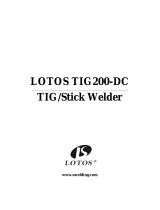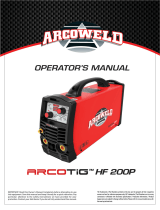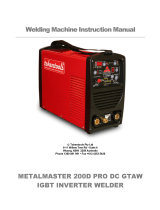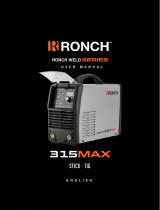
BRIEF INTRODUCTION OF THE PRINCIPLE
The welding machine uses an advanced inverter technology designed
rectifier. The emergence of inverter arc welding equipment is due to the
emergence of inverter power theory and devices. Inverter arc welding
power supply is the use of a high-power device MOSFET field effect
tube/IGBT single tube/module 50/60Hz power frequency electricity is
converted to high frequency (18-100KHZ above), and then step-down
rectifier, through the pulse width modulation technology (PWM) output
high-power DC source, the weight of the main transformer, the volume is
greatly reduced, the efficiency is increased by more than 30%. The advent
of the inverter welding machine is praised by experts as a revolution in the
welding industry.
Hand arc welding machine can provide a stronger, more concentrated,
more stable arc in the short circuit droplet transition. The electrode and the
workpiece react rapidly after the short circuit. In addition, this type of power
supply can be equipped with an arc adjustment device, which means that
the welding machine can be designed with different dynamic
characteristics. The dynamic characteristics can be adjusted to make the
arc softer or harder.
Hand arc welding machine series are characterized by: high efficiency,
energy saving, light, good dynamic characteristics, arc stability, and easy
control of solution pools. High no-load voltage and better energy thrust
compensation are widely used. Can weld stainless steel, alloy steel,
carbon steel, copper, and other non-ferrous metals. The welding machine
can use a variety of different specifications and materials of an electrode,
including acid, alkaline, and cellulose electrode can be used for aerial work,
fieldwork, and indoor and outdoor decoration. Compared with similar
products at home and abroad, it has the characteristics of small size,
lightweight, simple installation, easy operation, and so on.
























